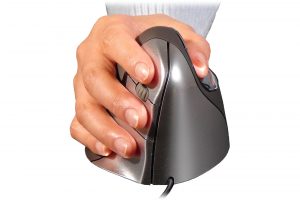What is tennis elbow?
Elbow pain has a large impact on daily tasks because we use our hands for most activities. In the presence of pain, tasks which involve gripping, lifting and twisting become difficult, often occurring concurrently with a lack of strength. The cause of elbow pain varies, with many individuals working in manual labour developing elbow pain due to repetitive heavy lifting or gripping movements, and also office workers due to static postures or poor positioning of ergonomic equipment. In this article we discuss the most common form of elbow pain and what you can do to manage it.
Lateral Epicondylalgia (Tennis Elbow)
Lateral Epicondylalgia, or Tennis Elbow, is characterised by lateral elbow pain, aggravated by gripping. It is a tendinopathy of the common extensor tendon, where all the extensor muscles of the wrist attach, hence explaining why gripping the hand results in pain around the elbow. Common causes of this pathology include;
- Repetitive gripping and twisting movements
- Excessive mouse use at work
- Poor posture and positioning of the mouse and keyboard
- Performing tasks with repetitive hand and arm movements
Development of lateral epicondylalgia often coincides with increased work demands or exercise load, thus resulting in the overload to the tendon and causing pain. The nature of this pain will commonly be sharp and intense, with rest often easing the pain.
Lateral epicondylalgia develops gradually and most presentations to physiotherapy are chronic in nature as they have been present for greater than three months. Physiotherapy treatments are aimed at decreasing pain and include;
Treatment techniques will be used in conjunction with one another to achieve improved outcomes. Home exercises are important for managing this pathology, with strengthening of and around the tendon crucial to settling symptoms and preventing recurrence. Exercises are in the form of isometric and eccentric techniques as recent evidence suggest these are associated with improved outcomes compared to other forms of exercise. These involve movements of the wrist, forearm and shoulder and will utilize a variety of equipment, such as resistance bands and dumbbells, with a large variety of exercise progressions possible.
Longstanding lateral epicondylalgia often results in the development of neural irritation starting from the neck. This can complicate the management of the pathology due to muscle weakness and ‘central sensitization’ occurring. If this presents, your physiotherapist will focus treatment on the cervical spine as well as the elbow to decrease irritation of the affected nerve. Exercises for management will also differ, with ‘nerve slider’ exercises prescribed to restore full mobility to the nervous tissue.
If you are currently experiencing elbow pain, click on the link below to book an appointment with one of our Physiotherapists.













